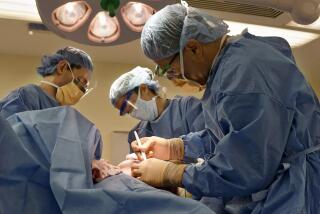Young women’s use of reproductive health services declines
Fewer U.S. women ages 15 to 24 are receiving reproductive healthcare, according to a new study. This includes services such as Pap tests, pregnancy tests, contraception prescriptions, tests for sexually transmitted disease and other gynecological and obstetric care.
Researchers used data from the National Survey of Family Growth, which included 4,421 young women polled in 2002 or between 2006 and 2008. Almost 60% of young women had received reproductive healthcare within the last year, but use has fallen by 8% between the two time periods. The declines were seen across all demographic and socioeconomic groups. Overall, however, economically disadvantaged women are the least likely to get care.
Between 1995 and 2002, reproductive health service use by young women had increased, noted the authors, led by Kelli Stidham Hall, of the Office of Population Research at Princeton University. However, several factors may be contributing to the downturn in use, including the decline in public sector clinics serving economically disadvantaged women; increasing unemployment and the corresponding lack of health insurance; updated gynecological health screening guidelines that require fewer Pap tests; and legislation that has increased mandatory parental participation in adolescent sexual and reproductive health care.
“Our findings may be a reflection of changing social, economic, and political contexts in which reproductive services were needed and provide over the last decade,” the authors wrote.
New provisions for care under healthcare reform may bring some of those women back into care, they added.
The study is published online in the American Journal of Public Health.
Return to Booster Shots blog
Follow me: twitter.com/LATShariRoan






